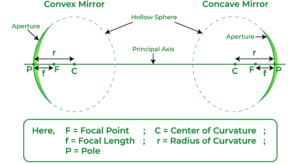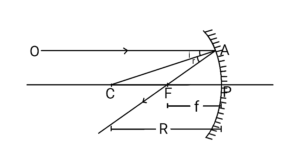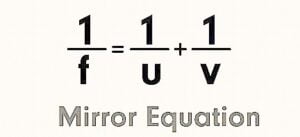
Let us consider two lenses A anb B of focal length f₁ and f₂ placed in contact with each other.
Let the object be placed at a point O beyond the focus of the first lens A. The first lens produces an image at I₁ is real, it serves as a virtual object for the second lens B producing the final image at I.
We assume the optical centres of the lenses to be coincident, this centre point is P.
The image formed by the first lens A, We get
1/f₁ = 1/v₁ – 1/u ……………( 1)
For second lens B, We get
1/f₂ = 1/v – 1/u ……………….( 2 )
Adding equation ( 1 ) and ( 2 )
1/f₁ + 1/f₂ = 1/v₁ – 1/u + 1/v – 1/v₁ = 1/f
or 1/f = 1/f₁ + 1/f₂ = 1/v – 1/u
Where f is equivalent focal length of the lenses, v is image distance and u is object distance.
The derivation is valid for any number of thin lenses in contact.
i.e. 1/f = 1/f₁ + 1/f₂ + 1/f₃ + ………
- In the terms of power the above equation is written as
P = P₁ + P₂ + P₃ + ………
Where P is power of lenses in contact.
- The total magnification m of the combination is product of magnifications of individual lenses.
- i.e. m = m₁ m₂ m₃ ……..
Numerical question.
- What is the focal length of convex lens of focal length 30 cm in contact with a concave lens of focal length 20 cm ? Is the system a coverging or diverging lens ? Ignore thickness of the lenses.
Solution.
f₁ = 30 cm, f₂ = -20 cm
f = ?
1/f = 1/f₁ + 1/f₂ = 1/30 – 1/20 = ( 2 – 3 )/60 = – 1/60
f = -60 cm
The lens is diverging.





